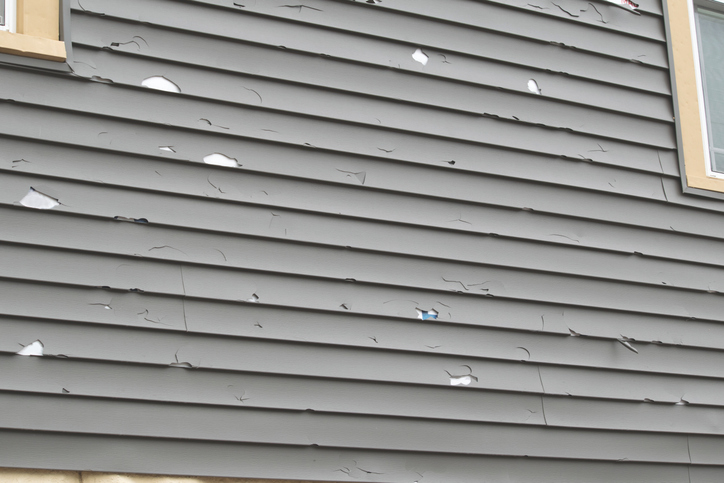How Long After Hail Damage Can I Claim? Deadlines & Tips
Severe hailstorms can cause significant damage to your home, particularly your roof, siding, gutters, and windows. While insurance coverage is designed to help you recover, many homeowners wonder: how long after hail damage can I claim with my insurance company? The answer depends on your policy, state laws, and how quickly you take action.
In this article, we’ll explain timelines, provide expert tips for faster settlements, and show you how to protect your rights as a homeowner.
Understanding Insurance Deadlines for Hail Damage
Every insurance policy includes deadlines for reporting and filing claims. Typically, homeowners have anywhere from 6 months to 2 years to file a claim, depending on the state and insurance provider. Some states allow up to 3 years, while others enforce shorter windows.
If you wait too long, the insurer may deny your claim—even if the damage was clearly caused by a recent hailstorm. That’s why understanding the deadline is the first step in protecting your property.
Why Timing Matters
If you’re asking, how long after hail damage can I claim, it’s important to know why insurers emphasize quick reporting:
- Evidence Weakens Over Time – Insurance adjusters rely on photos, inspection reports, and storm data. Waiting months makes it harder to prove hail caused the damage.
- Damage Worsens Without Repairs – A small roof puncture can lead to leaks, mold, and structural deterioration. Insurance companies may deny coverage if they believe neglect played a role.
- Policy Compliance – Missing the claim window is a common reason for denial.
Common Claim Filing Windows by State
While deadlines vary, here’s a general breakdown:
- Texas – 1 to 2 years from the date of loss
- Florida – 1 year (recently reduced from 3 years)
- Colorado – 1 year from the date of hailstorm
- Midwest states (Kansas, Nebraska, Missouri) – 1 to 2 years, depending on carrier
- Other states – Often 1–3 years, but always check your specific policy
Tip: Don’t assume your state allows the maximum time. Always confirm with your insurer.
Steps to Take Immediately After Hail Damage
To avoid delays and increase your chances of approval, follow these steps right after a storm:
1. Inspect and Document Damage
Walk around your property and take photos of roof shingles, gutters, siding, and windows. Look for dents, cracks, and missing materials.
2. Contact Your Insurance Company Quickly
Report the damage as soon as possible, even if you’re unsure of the severity. Early reporting creates a paper trail.
3. Schedule a Professional Inspection
Roofing contractors or public adjusters can identify hidden hail impacts that homeowners often miss.
4. Prevent Further Damage
Cover broken windows or leaks with tarps or plywood. Insurers may deny part of your claim if they believe additional damage resulted from neglect.
5. Keep Records of Temporary Repairs
Save receipts for tarps, sealants, or emergency labor. These costs may be reimbursed.
Tips for Faster Settlements
The claims process can take weeks—or even months—depending on how it’s handled. Here’s how to speed it up:
File Promptly
The faster you file, the quicker your insurer can schedule an inspection and process payment.
Be Thorough in Documentation
Submit clear photos, storm reports, and written descriptions. Adjusters prefer claims supported by strong evidence.
Work with Reputable Contractors
Insurance companies often trust reports from licensed contractors, especially when requesting supplements for overlooked damage.
Consider a Public Adjuster
If your insurer undervalues or delays your payout, a public adjuster can negotiate on your behalf.
Stay Organized
Keep all claim documents, emails, and receipts in one folder. This helps prevent back-and-forth delays.
Avoiding Common Mistakes
When asking, how long after hail damage can I claim, many homeowners discover they made mistakes that slowed or hurt their claim. Avoid these pitfalls:
- Waiting Too Long – Even if your policy allows 2 years, insurers prefer claims filed within weeks.
- Not Fixing Minor Issues – Small leaks can worsen quickly, giving insurers an excuse to deny coverage.
- Accepting the First Settlement Offer – Insurers may initially underpay. Don’t be afraid to dispute or request supplements.
- Failing to Check Policy Exclusions – Some policies limit coverage for cosmetic hail damage.
What If Your Claim Is Denied?
Receiving a denial can feel overwhelming, but it doesn’t mean the process is over.
- Request a Written Explanation – USAA, State Farm, and other insurers must state the reason for denial.
- Compare With Your Policy – Check if the denial matches policy exclusions.
- Gather More Evidence – Hire an independent inspector if necessary.
- File an Appeal – Provide additional proof or documentation.
- Seek Professional Help – A property damage attorney or public adjuster can fight for a fair outcome.
How to Strengthen Your Case
If you want to maximize your payout, here’s how to strengthen your hail damage claim:
- Hire a contractor who specializes in storm restoration.
- Request a copy of the adjuster’s report for accuracy.
- Provide meteorological data proving the storm’s severity.
- Highlight damages not visible from the ground.
- Always get a second opinion if you feel underpaid.
Final Thoughts
So, how long after hail damage can I claim with my insurance company? The answer depends on your policy and state laws, but in most cases, you have between 6 months and 2 years. However, waiting is risky—the longer you delay, the harder it is to prove hail caused the damage.
To get faster settlements, report damage promptly, document everything, and consider working with a public adjuster if your insurer underpays or denies coverage.
By acting quickly and avoiding common mistakes, you’ll increase your chances of a smooth and fair settlement—ensuring your home is fully restored without unnecessary financial strain.



